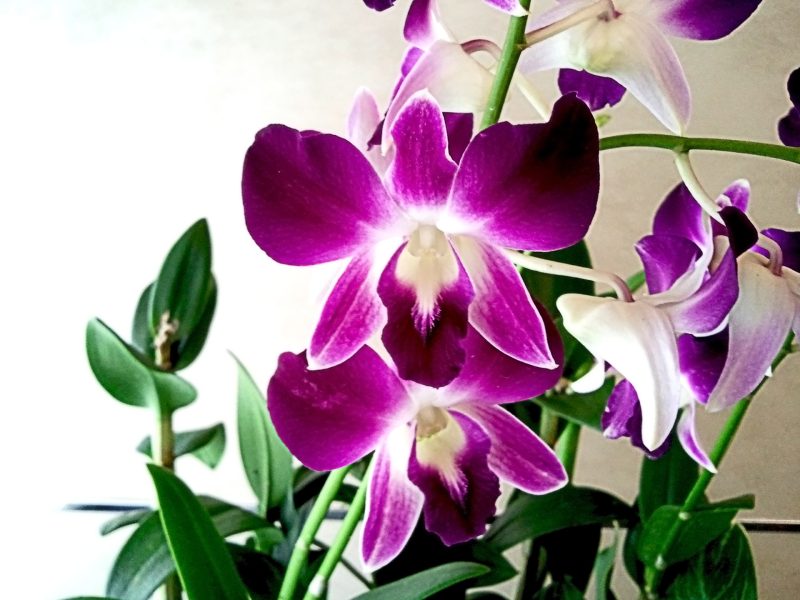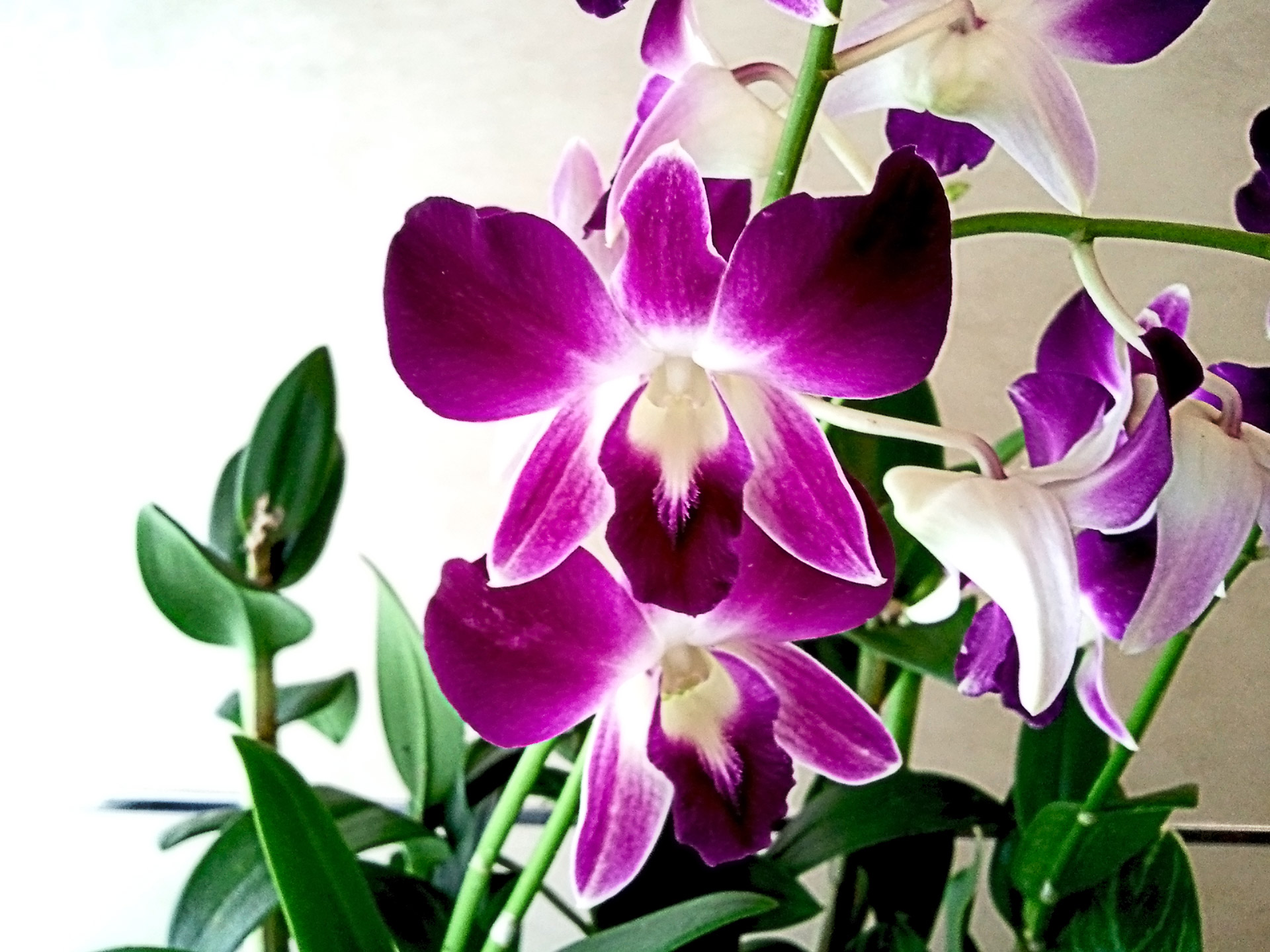
Are orchids air plants? Unravel this botanical mystery with our friendly guide, as we compare and explore the fascinating world of these captivating plants.
Are orchids air plants? You might wonder as you stroll through a lush botanical garden, marveling at the fascinating variety of plant life.
It’s a question that has puzzled many plant enthusiasts, as the vibrant and delicate nature of these captivating beauties can be quite deceiving.
In this blog post, we’ll embark on a botanical adventure, delving deep into the alluring world of orchids and air plants to uncover the similarities, differences, and the proper care needed to keep them thriving.
So, let’s dive in and solve this enchanting enigma together!
Are Orchids Air Plants? Unraveling the Mystery
 Have you ever found yourself admiring the diverse beauty of plants and pondering, “are orchids air plants?”
Have you ever found yourself admiring the diverse beauty of plants and pondering, “are orchids air plants?”
Well, you’re not alone! Many of us share the same curiosity, and it’s high time we unravel this botanical mystery together.
In this blog post, we’re going to explore the captivating world of orchids and air plants, shedding light on their similarities and differences.
Not only will we debunk some common misconceptions, but we’ll also share some helpful tips to ensure these remarkable plants flourish in your care.
So, grab a cup of tea, and let’s embark on this delightful journey together!
Introducing Air Plants and Orchids
Let’s start with a brief overview of our two plant stars: air plants and orchids.
Air Plants
Air plants, belonging to the genus Tillandsia, are unique in that they don’t require soil to grow.
They absorb water and nutrients through their leaves, making them a popular choice for low-maintenance, creative displays.
Orchids
Orchids, on the other hand, make up the vast Orchidaceae family, with thousands of species and hybrids captivating our hearts with their striking beauty and elegant forms.
Although they might share some similarities, they are distinct in their own ways.
The Value of Knowing Their Differences
Understanding the differences between air plants and orchids is crucial for a few reasons.
Firstly, it helps you appreciate the incredible diversity and adaptation strategies in the plant kingdom.
Secondly, it ensures you provide the right care and environment for these unique plants to thrive.
And finally, it allows you to create visually appealing and harmonious displays in your home or garden, showcasing the best of both worlds.
Dispelling Myths and Misconceptions
As we delve deeper into the world of air plants and orchids, our objective is to debunk some common misconceptions that might have led to confusion in the past.
By clarifying the facts and clearing up any misunderstandings, we’ll not only satisfy our curiosity but also empower ourselves to make informed decisions when it comes to plant care and cultivation.
So, let’s dive into the details and set the record straight, ensuring our leafy friends receive the love and attention they deserve!
What are air plants?
Now that we’ve set the stage, let’s dive into the fascinating world of air plants!
You might be wondering, “What exactly are air plants, and what makes them so special?”
Well, my fellow plant enthusiasts, you’re in for a treat. Air plants are truly remarkable, boasting unique characteristics and growth habits that set them apart from other plants.
In this section, we’ll explore the captivating features of air plants, unraveling the secrets behind their extraordinary ability to thrive without soil.
So, let’s get ready to be amazed by these botanical wonders!
Defining and Exploring Air Plants
Air plants, also known as epiphytes, have gained popularity as indoor plants in recent years.
These unique plants, belonging to the Tillandsia genus, have the ability to grow without soil and can be found growing on a variety of surfaces in nature.
In this section, we’ll explore what makes air plants so unique, including their epiphytic lifestyle, nutrient absorption, and root systems.
The Epiphytic Lifestyle
Air plants are known for their epiphytic growth habit.
Unlike most plants, which grow in soil, air plants grow on other surfaces such as tree branches, rocks, or even man-made structures.
This allows them to thrive in a variety of environments without competing for resources on the ground.
Absorption of Nutrients and Water through Leaves
Since air plants do not grow in soil, they have evolved to absorb nutrients and water through their leaves.
This process is known as foliar feeding and is an essential part of their survival.
Root System Primarily for Attachment
While air plants do have roots, they are primarily used for attachment to their growing surface rather than for nutrient uptake.
In fact, air plants can survive without roots as long as they have a secure place to anchor themselves.
Common Examples of Air Plants (Tillandsia Species)
Tillandsia is the largest genus of air plants, with over 650 known species.
Some of the most popular Tillandsia species for indoor cultivation include T. ionantha, T. xerographica, and T. stricta.
These air plants come in a variety of sizes and colors, making them a great addition to any home or office.
A Closer Look at Orchids
Orchids are a diverse and fascinating family of plants that are prized for their beauty and complexity.
In this section, we’ll take a closer look at the Orchidaceae family, including their diversity of species and ecological roles, as well as their growth habits.
Overview of the Orchidaceae Family
Diversity of Species
The Orchidaceae family is one of the largest families of flowering plants, with over 25,000 species and 100,000 hybrids.
Orchids can be found in almost every corner of the world, from tropical rainforests to arctic tundras.
Ecological Roles
Orchids play important ecological roles in their natural habitats, serving as pollinators for many insects and birds.
Some orchids have even developed complex relationships with specific pollinators, such as male bees or hummingbirds.
Orchids’ Growth Habits
Orchids come in a wide variety of growth habits, with some growing in soil and others growing on other surfaces.
The three main growth habits of orchids are terrestrial, epiphytic, and lithophytic.
Terrestrial
Terrestrial orchids grow in soil and have roots that are used for both anchoring and nutrient uptake.
They are commonly found in tropical and subtropical regions.
Epiphytic
Epiphytic orchids grow on other surfaces, such as tree trunks or rocks, and absorb nutrients and water through their leaves.
These orchids are often found in tropical rainforests.
Lithophytic
Lithophytic orchids grow on rocks and other mineral-based surfaces and often have specialized adaptations for surviving in harsh environments.
These orchids are commonly found in high-altitude regions.
Comparing Orchids and Air Plants
While orchids and air plants are both known for their unique growth habits and beauty, there are some important differences between these two plant types.
In this section, we’ll explore both the similarities and differences between orchids and air plants.
Similarities between Orchids and Air Plants
Epiphytic Growth Habit
One of the most obvious similarities between orchids and air plants is their epiphytic growth habit.
Both plants have adapted to growing on other surfaces in order to survive in their respective environments.
Specialized Root Systems
Orchids and air plants both have specialized root systems that are adapted for attachment rather than nutrient uptake.
This allows them to anchor themselves to their growing surface while absorbing nutrients and water through their leaves.
Differences between Orchids and Air Plants
Nutrient and Water Absorption
While both orchids and air plants absorb nutrients and water through their leaves, they have different strategies for doing so.
Orchids have developed specialized structures called velamen roots that absorb water from the air and hold it like a sponge.
While air plants have developed trichomes on their leaves that capture moisture and nutrients from the surrounding environment.
Structural Differences
Orchids and air plants also have different structural adaptations.
Orchids have complex and showy flowers that are often used for pollination, while air plants have simple flowers and instead focus on producing colorful foliage.
Care and Cultivation Requirements
Orchids and air plants have different care and cultivation requirements.
While both plants require bright, indirect light and high humidity, orchids are more finicky and may require specialized potting mixes and fertilizers.
Air plants, on the other hand, are more forgiving and can thrive in a variety of growing conditions.
Care Tips for Orchids and Air Plants
Proper care is essential for keeping both orchids and air plants healthy and thriving.
In this section, we’ll explore some tips for watering, light and temperature, fertilization, and mounting and potting options.
Proper Watering Techniques
Both orchids and air plants require consistent and appropriate watering.
Orchids should be watered regularly but allowed to dry out slightly between waterings, while air plants should be misted or soaked in water once a week and allowed to dry completely between waterings.
Light and Temperature Requirements
Orchids and air plants both require bright, indirect light and warm temperatures.
However, orchids may require more specific temperature ranges depending on the species, while air plants can tolerate a wider range of temperatures.
Fertilization and Nutrient Needs
Both orchids and air plants require nutrients to grow and thrive.
Orchids may require specialized fertilizers and potting mixes, while air plants can be fertilized using a diluted liquid fertilizer.
Mounting and Potting Options
Orchids and air plants can be mounted on a variety of surfaces, including bark, cork, or stones, or potted in specialized mixes.
It’s important to choose the appropriate mounting or potting option based on the specific plant and growing conditions.
Pest and Disease Control
Both orchids and air plants can be susceptible to pests and diseases, so it’s important to monitor them regularly and take appropriate measures to prevent or treat any issues that arise.
Showcasing Beautiful Examples
Orchids and air plants are both incredibly beautiful and unique plants that can add a touch of natural beauty to any space.
In this section, we’ll explore some examples of exquisite air plants and stunning orchids, as well as creative display ideas for both plant types.
Exquisite Air Plants to Consider
Some popular air plants to consider include the Tillandsia ionantha, Tillandsia xerographica, and Tillandsia cyanea.
These air plants come in a variety of sizes and colors and can be mounted or displayed in a variety of ways.
Stunning Orchids to Grow
There are countless species and hybrids of orchids to choose from, each with their own unique beauty.
Some popular orchids to consider include the Phalaenopsis, Dendrobium, and Cattleya.
These orchids come in a range of colors and sizes and can be displayed in a variety of ways, such as in hanging baskets or mounted on a piece of driftwood.
Creative Display Ideas for Air Plants and Orchids
Both air plants and orchids can be displayed in a variety of creative and unique ways.
For example, air plants can be mounted on a piece of driftwood or displayed in a hanging terrarium, while orchids can be mounted on a decorative board or displayed in a decorative pot.
The possibilities are endless, so don’t be afraid to get creative!
Are Orchids Air Plants? Final Thoughts
In conclusion, orchids and air plants are two incredibly unique and beautiful plant types that can add a touch of natural beauty to any space.
While they have some similarities, such as their epiphytic growth habit and specialized root systems, they also have some important differences in their nutrient and water absorption, structural adaptations, and care requirements.
By following proper care techniques and exploring creative display ideas, you can enjoy the beauty of both orchids and air plants in your home or office.
So go ahead and explore these fascinating plant types, and enjoy the natural beauty they bring to your space!
Read more about growing orchids without soil.
Read more: Are Orchids Hard To Take Care Of? Easy Growth Formula
This post contains affiliate links.









